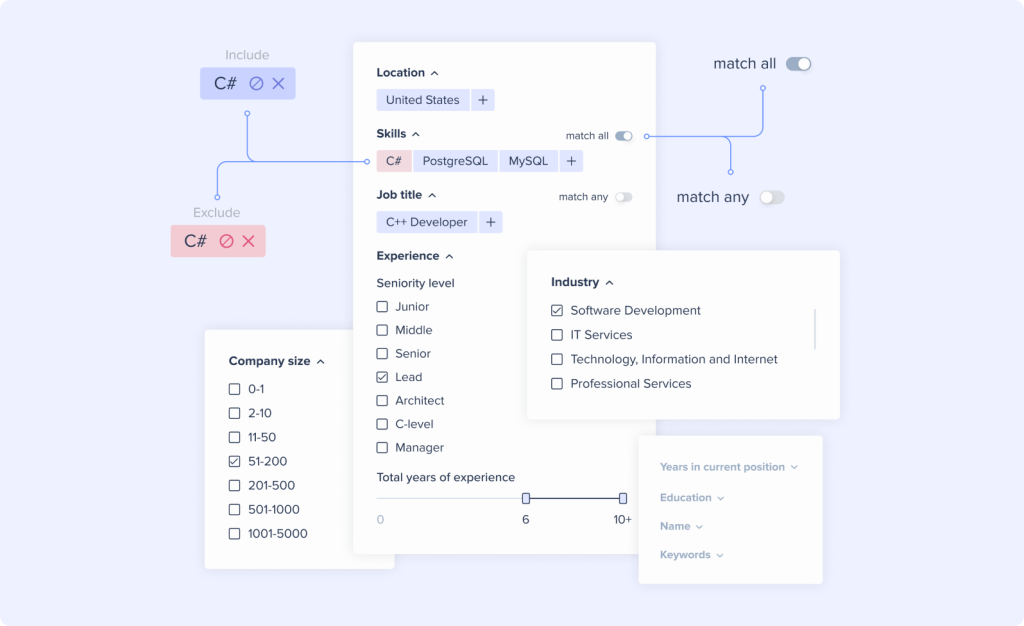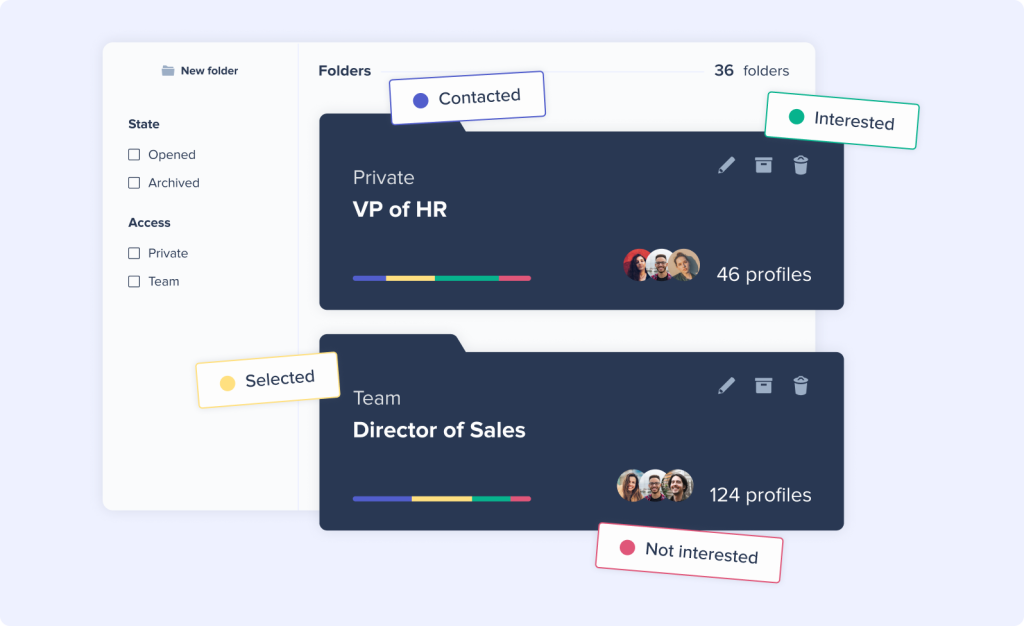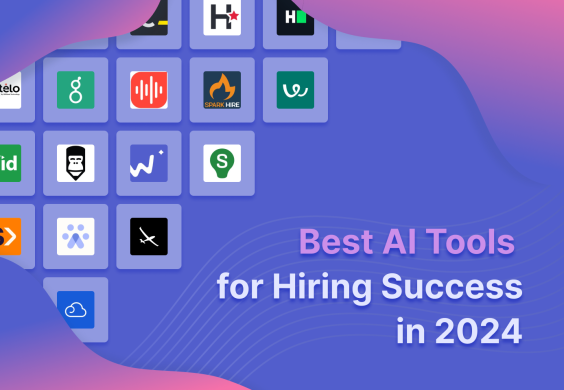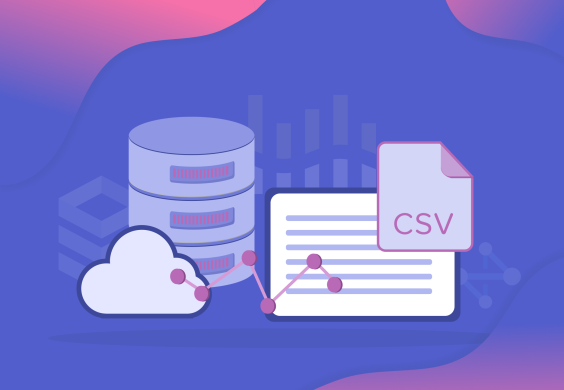In this overview, we explore candidate sourcing and talent intelligence automation—leveraging automation technologies to seamlessly find, reach, and connect with prospective candidates. While classifications based on similar criteria can blur (some consider only initial hiring stages, like sourcing, while others include associated processes such as communication automation, data management, and analytics), for the purposes of this review, we’ll encompass a broader scope.
Leading market players, like Greenhouse, highlight sourcing automation as a transformative tool, enhancing recruiters’ ability to swiftly and effectively find, reach, and engage top talent.
Therefore, in this review, we adhere to this concept as well.
In essence, effective talent sourcing should foster symbiotic relationships with outreach and analytics systems. What’s the purpose of spotting candidates if no endeavor is undertaken to connect with them?
Candidate Sourcing Automation Use Cases
Talent intelligence and sourcing automation manages various types of processes:
- Discovering candidates from extensive pools and platforms (LinkedIn, GitHub, StackOverflow, Kaggle, etc.) via advanced semantic search algorithms.
- Retrieving accurate contact information for candidates.
- Pre-screening profiles based on skills, company fit, etc.
- Creating candidate data profiles, segmenting and categorizing them based on various criteria, synchronizing them with the hiring manager software stack of the company, with automatic updates.
- Sourcing automation and talent intelligence software leverages AI / ML to rank and align candidate profiles with job descriptions accurately. Ideally, this process guarantees that candidates are shortlisted based on their qualifications, skills, and work history.
- Through the examination of past data and candidate activities, these automated tools provide predictive insights. This allows recruiters to pinpoint potential top performers, forecast their job performance, and refine their sourcing methods.
- Supporting recruiter outreach with personalized (it’s crucial!), automated email / messaging communication campaigns.
- Tracking and boosting engagement and centralizing sourcing activities within various platforms.
- Generating comprehensive reports to assess sourcing effectiveness and pipeline quality.
Levels of Talent Sourcing Automation
Automation in recruiting existed long before AI, but many non-AI automated hiring tools now appear outdated. However, not all scenarios require complex AI solutions.
Shally Steckerl outlines four key levels of automation in recruiting, progressively enhancing recruitment efficiency:
- Basic Automation: Automates simple, routine tasks.
- Process Automation: Utilizes complex tools, recruiting systems and chatbots.
- Integration Automation: Merges various hiring tools into a cohesive system.
- Intelligent Automation: Employs advanced AI for multiple, autonomous steps.
Model Varieties of Automated Talent Sourcing
- Rule-Based Models: These rely on clear, predefined rules (sometimes, similar to IF-THEN statements), offering simplicity suitable for basic use cases.
- Machine Learning-Based Models:
- Supervised Learning: Trained on labelled data with known outcomes, allowing for predictions based on patterns.
- Unsupervised Learning: Extracts insights from unlabelled data, identifying patterns and structures independently.
- Reinforcement Learning: Learns through trial and error, optimizing decisions based on feedback from the environment.
- Hybrid Models: Combining elements of different model types, these offer versatility and potentially enhanced performance by leveraging the strengths of multiple approaches.
Pros and Cons of Talent Sourcing Automation
4 Main Upsides:
- Streamlining and Financial Benefits: Automation refines labor-intensive activities, cutting down on the workload and decreasing expenses linked to hands-on procedures.
- Improved Candidate “Calibre”: Sophisticated algorithms and predictive analytics pinpoint the best candidates, elevating hiring standards and better meeting organizational goals.
- Improved Candidate Engagement and CX: Automated hiring tools offer smooth communication and self-service features, improving interactions and strengthening the company’s appeal to high-quality talent.
- Growth: Automation guarantees both the expansion and uniformity of the recruitment process, allowing recruiters to manage high volumes of candidates effectively without sacrificing quality.
Mitigating Risks in Talent Sourcing Automation: 6 Main Considerations
- Harmonizing Automation with Human-Centric Approach: Ensure automation complements, not replaces, personal interaction to enhance candidate engagement.
- Guarding Against Bias: Stay vigilant to prevent bias and inaccuracies that may arise from over-reliance on automation.
- Improving Accuracy: Enhance review processes to counteract potential info distortions caused by manipulations by candidates.
- Navigating Tech Issues: Prepare for potential hurdles and ensure adequate training to overcome them successfully.
- Adapting to Limited Flexibility: Acknowledge the challenges automation faces with complex assessments and supplement them with human evaluation methods when necessary.
- Preserving Creativity: Find ways to maintain creativity in sourcing strategies amidst automated processes to stay competitive.
Numbers Highlighting the Significance of Talent Sourcing Automation
The importance of proper talent intelligence / sourcing automation, a crucial component of recruitment automation, is quantified in statistics that underscore its importance:
- According to LinkedIn, recruiters dedicate on average one-third of their work week to sourcing candidates for just one position, highlighting a significant potential for increasing efficiency.
- Jobvite reveals that intelligent sourcing technologies can reduce sourcing time by approximately 30%.
- Wandify’s research indicates that a suitable sourcing solution may halve recruitment costs, double response rates from targeted candidates, and cut the time to pinpoint them by 50%.
- Various studies show that automation can decrease time-to-hire by 7 to 15%, potentially saving up to $90,000 per recruiter annually.
- According to a Deloitte report, leaders who implement automated hiring tools are more successful in their industry, achieving 30% higher revenue and 18% higher income than their peers.
- Moreover, implementing automation can enhance recruiting staff productivity by 10 to 50%.
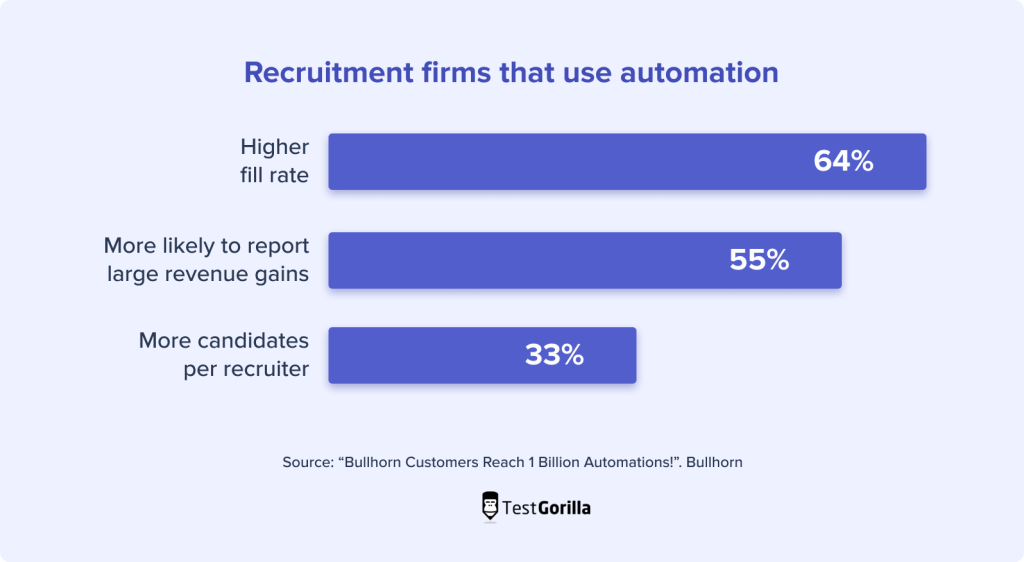
Key Factors for Successful Sourcing Automation Implementation:
- Compliance: Ensure adherence to regulations and standards to mitigate legal and privacy risks.
- Alignment with Goals:
- Define clear objectives.
- Identify and resolve process bottlenecks.
- Explore features to enhance productivity.
- Establish efficiency KPIs and metrics.
- Balancing Automation with Human Interaction and Decisioning: Ensure clear division and harmony between automated processes and human involvement to foster candidate relationships.
- Personalization: Adapt your communication to suit individual candidate preferences.
- Continuous Improvement through Feedback: Utilize candidate feedback and experience metrics to enhance processes and fine-tune automation.
- Ethical Considerations: Counteract biases and promote equity in automated sourcing / hiring processes.
How Wandify Platform Streamlines Talent Sourcing
Wandify elevates talent sourcing with its platform, granting access to millions of verified profiles from candidates, clients, and business partners.
Key Features of Wandify:
- Precise Talent Searches: Advanced search filters and customizable criteria ensure users
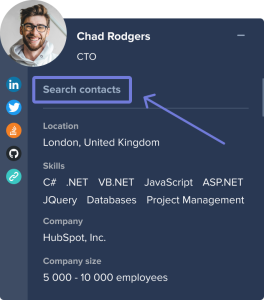 find exactly who they’re looking for. Over 20 filters, including innovative options like “open to work” status, alongside features for efficient team collaboration.
find exactly who they’re looking for. Over 20 filters, including innovative options like “open to work” status, alongside features for efficient team collaboration. - Enhanced Searches with AI: Smart query enrichment with AI introduces related terms and skills, improving search outcomes.
- Effortless Process Organization: Candidates can be sorted into folders by criteria like location and job title for easy management.
- Chrome Extension: Quick access to profile insights directly through a browser extension.
- API Access: Extend Wandify’s functionalities with its comprehensive API.
- Affordable Pricing: From a Free plan onwards, pricing is made accessible for all user levels.
- Up-to-Date Database: With a database of over 25 million profiles updated monthly, Wandify ensures the accuracy and relevance of contact information, making it a powerhouse for recruiters and businesses aiming for efficient talent acquisition.
Conclusion
Recruitment is undergoing a transformation, with automation and AI/ML becoming essential in sourcing the best suitable talent. Apart from sourcing, effective hiring tools can assist in selecting optimal channels and frameworks for talent outreach, autonomously engaging with candidates, and conducting initial pre-assessments to compile a shortlist.
Smart automation empowers recruiters to focus on crucial field tasks and meaningful interactions with top talent. Among the effective hiring software for this purpose is Wandify, well-equipped to address the complex challenges of sourcing automation.
👉 Experience the advantages first-hand by exploring this AI-powered sourcing tool.
